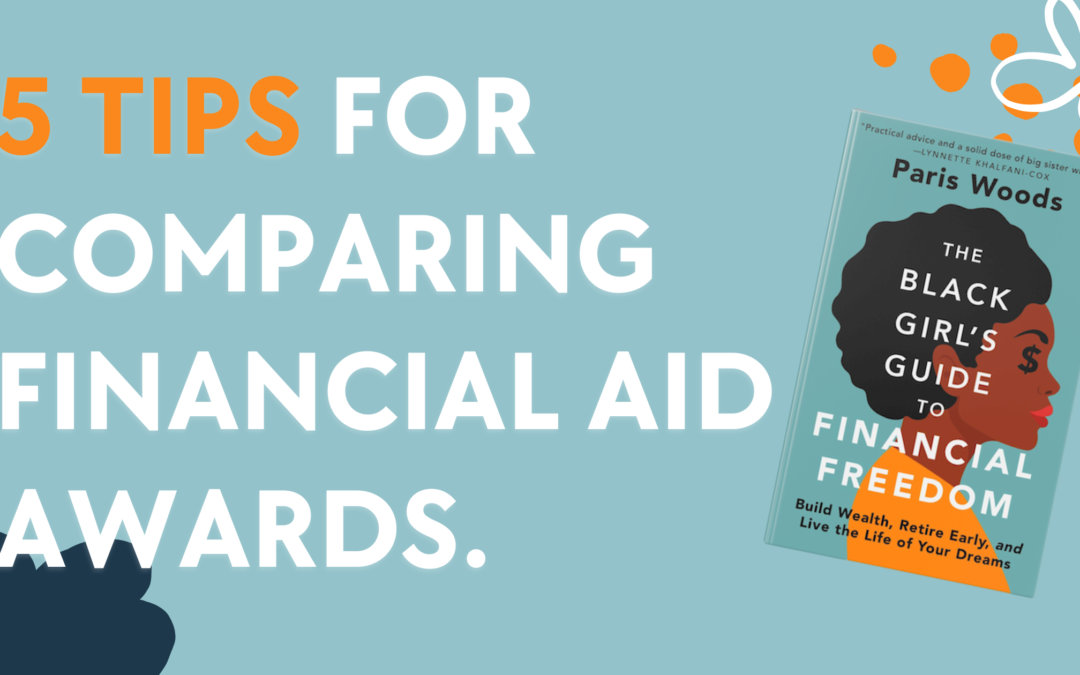It’s March and college acceptances are going to start rolling in!
This is an incredibly exciting time for students and their families across the country and also an important time because you are preparing to make one of the most important financial decisions of your lives.
As a former financial aid officer, and as someone who has worked directly with high school students on the path to college, I want to see you make the smartest possible decisions in the weeks to come.
Tip #1: Know the difference between billed and unbilled expenses.
Nowadays, when you receive your financial aid award you often see a list of all of the expenses related to going to school. These expenses include things like books, food, transportation to and from campus, and other miscellaneous costs.
Many of these costs are estimates. The actual expenses will depend on how much money you choose to spend and how many deals you’re able to find.
For example, the books for your classes are often available at the college bookstore for the highest price, but they may also be available online from retailers like Amazon or half.com.
As you look at the expenses on your financial aid letter, I want you to distinguish between things that the school is actually going to send you a bill for–things like tuition fees and your room and board–versus things that you will shop around for like books and transportation.
Once you know the billed costs you can compare how much money you’re getting in scholarships to see what the gap is going to be.
How much money are you actually going to owe the school after your financial aid has been applied? That is the most important number for you to keep in mind as you compare different offers.
Tip #2: Subtract loans from your financial aid award.
As you may know, I am not a fan of going into debt for school. Scholarships and shopping around are my favorite methods for going to school debt free.
When you get your financial aid award, it will have a number of different types of financial aid listed. Some of the types of financial aid you may see include scholarships, work-study, and loans.
Scholarship money is free money that you do not have to repay. This may also show up in your award letter as a grant. Same thing–money you don’t have to pay back.
Work-study is money that you actually have to work to earn. You’ll get a job and you’ll be paid this money in the form of a paycheck. You do not get this money up front, you work for it. You earn it over time.
And then loans. Loans are the sneaky culprit that often get tucked into financial aid awards to make you think that the total cost of your education is covered.
I have seen many schools fill the entire gap between the cost of attending their school and the actual scholarship money they’ve given you with loans, seemingly adding tens of thousands of dollars or more in your financial aid package.
First of all, you do not have accept these loans. You can say, no, I don’t want the loans. And you should know how much you’re going to have to pay for school without applying those loans to the bill.
Tip #3: Never consider a scholarship offer without seeing the full cost of attendance and your full financial aid award.
Many schools will send an acceptance letter that includes how much money in scholarships you’ve received. It’s really exciting to see that you’ve been awarded a scholarship and you’re so excited to be admitted to the school.
But, if all you did was compare your acceptance letters to each other with the amount of scholarships you’ve won, you could easily fool yourself into choosing a school that offers you a higher scholarship, but where it costs so much more to attend.
That scholarship might be barely a drop in the bucket compared to the cost of attendance.
So don’t fall for the acceptance letter scholarship trick.
You want to look at the full financial aid award. This award will tell you the full cost to attend the school and we’ll tell you everything that’s in your financial aid award including any grants and scholarships, any work-study, and any loans.
Then and only then should you make a decision about which school to attend.
Tip #4: Did you know that financial aid awards are often negotiable?
This is especially true of private schools that are awarding their own financial aid in addition to any grants and scholarships directly from the federal government or the state.
If you find yourself comparing two financial aid offers from schools that are fairly similar and one award is better than the other, feel free to use that letter as a bargaining chip to increase your offer.
Go back to the school that gave you less money and ask them if there is an appeals process. In your appeal, you can include a copy of the other financial aid award and ask the college if they can match or beat It.
Many schools have an appeals process in place specifically for this reason and they may be willing to give you additional scholarship money so that you will choose their school.
Tip #5: Money isn’t everything.
I would advise you to kick the tires of every school that you’re considering attending.
See if they have an opportunity for you to visit the campus. Speak with professors and speak with other students.
They may even have funds to be able to fly you out to visit the campus if you don’t have the money to afford to attend yourself.
This is one of the most important decisions that you get to make. Weigh all of your options carefully, ask for what you want, and what you need.
And in the end, trust your gut.
Good luck and fingers crossed as those acceptances start to roll in!

